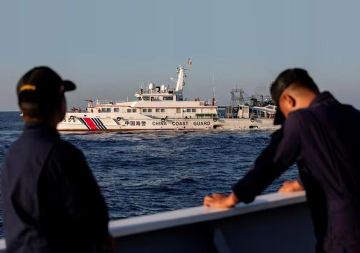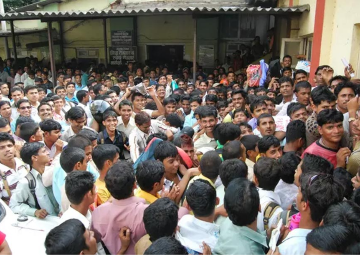
Recently while delivering the valedictory address at the joint Indian Ocean Dialogue and the Delhi Dialogue, EAM Jaishankar mentioned that, “India is increasing the area covered by its Indo-Pacific policy to include the Western Indian Ocean and Arabian Sea – this includes the neighbours in the Gulf, the island nations of the Arabian Sea and Africa. Stretching the geographical and therefore strategic area of the Indo-Pacific to encompass not merely a region stretching eastwards from India, which would have the ASEAN as the central focus, India is now incorporating the western Indian Ocean and Africa. There is room for a Western Indian Ocean version of this concept too.”
However, it might not be a good idea to talk about India’s Indo Pacific construct as a single entity especially due to India’s varying policy interests and concerns in these two sub-regions. Due to the vast geography and number of countries involved, a more viable, practical, and pragmatic approach for India will be to implement two sets of distinctive policies – like ‘Act East’ and ‘Act West’ - as a part of its Indo-Pacific strategy.
“Act-East” and the Indo-Pacific
Although the East received attention as a result of India’s Look East and now Act East policy, but for a long time our eastern neighbours were just seen as economic and strategic partners, rather than as important maritime players or even maritime neighbours. With the evolution of the idea of the “coupling of the two seas” and the ‘Indo-Pacific’ from 2008 onwards, do we see the eastern neighbours also being looked at through the nautical lens. Though the navy for its overseas deployments in the eastern Indian Ocean and the Pacific has always paid attention to the eastern Indian Ocean, but this side did suffer from a ‘relative neglect’ in the Indian strategic thinking.
Given the present scenario where most of the major players championing the Indo-Pacific like the US, Australia, Japan, South Korea and now the ASEAN countries (ASEAN Outlook on the Indo-Pacific) are nations bordering the eastern Indian Ocean and the Pacific, it would be difficult for India to neglect these countries if it wants to continue to make its voice heard and influence felt in this emerging Indo-Pacific debate. India has been strengthening its relations and working closely with its eastern neighbours as can be seen in the 2+2 dialogues with US and Australia, the foreign ministerial level Quadrilateral dialogue, among many others. Even individually with ASEAN countries like Indonesia, India has a Shared Vision Statement on the Indo-Pacific, the two countries are also actively having dialogues and meetings to initiate connectivity projects between India’s Andaman and Nicobar Islands and Aceh in Sumatra island.
Moreover, a lot more can be done with these countries. For instance, India can enter into connectivity initiatives with its Southeast Asian neighbours as a part of the Masterplan on ASEAN Connectivity 2025. In these connectivity programs, India can work alongside with countries like Japan, South Korea, US, Australia. The Asia Africa Growth Corridor spearheaded by Japan, India’s Sagarmala (port connectivity project) and the Masterplan on ASEAN Connectivity can work in tandem.
‘Act West’ and the Indo-Pacific
The Western Indian Ocean region has only found reference in Indian policy circles in terms of geography, rather than formulating India’s strategy towards the region as a coherent or cogent vision, strategy, or as a part of India’s Indo Pacific construct.
The Western Indian Ocean region is viewed as a gateway to continental Africa by both India and China. As China continues to rapidly expand its economic and military heft in the region, India cannot afford to be left behind. Subsequently, in keeping in line with Indian government’s official stance of increasing the Indian Ocean region’s community’s involvement within the notion of Indo Pacific and in order to truly reflect ‘inclusivity’, the MEA recently expanded the Indian Ocean Division to include all the major island nation-states in the western and southern Indian Ocean. Now, the next step for India should be to get Observer Status in the Indian Ocean Commission (COI) – an intergovernmental commission which tracks the development of the five African Indian Ocean nations. In this respect, France supports India’s candidature.
Additionally, after signing defence cooperation agreements with Madagascar and Comoros earlier in October, India has now appointed a defence attaché to its mission in Madagascar. This will help India to closely monitor the security developments in the region. India is also mulling to incorporate the Indian Coast Guard (ICG) in its outreach to these strategically placed Indian Ocean ‘Vanilla’ island nations. Since the adverse effects of climate change and natural disasters, especially cyclones, pose severe threats, the ICG and the Indian Navy, needs to play a more pro-active role in its HA/DR and Search and Rescue (SAR) operations in the region.
On the other hand, India’s eastern neighbours have existing and established regional architectures like the East Asia Summit (EAS), the ASEAN Regional Forum (ARF), the Expanded ASEAN Maritime Forum among others to discuss and deliberate on the Indo-Pacific. But the Western Indian Ocean countries, besides the Indian Ocean Rim Association (IORA) does not have established regional frameworks to exclusively look into the Indo-Pacific concept. The following section will look into how the existing platforms and mechanisms can be utilised for evolving an ‘Act West’ version of the Indo-Pacific.
Leveraging existing mechanisms for cooperation
Maritime Security - Maritime security has emerged as an important dimension of India’s bilateral relations with the larger Indian Ocean community. Since, it is important to secure national interests by ensuring the safety and security of vital trade routes, particularly choke points, regional cooperation within the Indian Ocean Region through mechanisms such as Indian Ocean Rim Association (IORA), Indian Ocean Commission (COI), Indian Ocean Tuna Commission (IOTC) has become paramount. With nearly forty percent of India’s trade conducted with the littoral nations along the Indian Ocean Rim, freedom of navigation and safe passage of Indian ships for conducting unimpeded commerce is central to India’s maritime interests. In this respect, the IORA has emerged as an important platform for identifying and highlighting common challenges – both traditional (like the china challenge) and non-traditional (such as human, drugs, arms trafficking, climate change, natural disasters, IUU fishing etc) and synergising and coordinating incident responses.
Collaboration in data sharing and information – One fact clearly discernable from EAM Jaishankar’s address at Indian Ocean Dialogue was that although various information and data sharing mechanisms and platforms exists towards India’s east, there are less mechanisms that covers India’s west. However, this does not imply that there are no platforms. From 2010 – 2015, the MARSIC project (Enhancing Maritime Security and Safety through Information Sharing and Capacity Building) was operational which aimed to reinforce capacity of Indian Ocean maritime administrations and worked to support the Djibouti Code of Conduct (DCoC), the first such code to be operational in Western Indian Ocean waters. From 2015 onwards, the MARSIC project’s mandate was taken up by the EU Critical Maritime Route Wider Indian Ocean (EU CRIMARIO) project, which supports regional countries’ endeavors to enhance their maritime situational awareness (MSA). Apart from conducting training and capacity building exercises, the CRIMARIO project has also implemented a new secure information sharing and incident management tool known as the IORIS platform. Since recording transparent data is of paramount importance to African countries, information sharing must be improved at the national level. In this endeavor, India can partner with external powers like France, US, UK, and Japan and explore the possibility of setting up national coordinating offices with secured online platforms. India too has established the Information Fusion Centre-IOR (IFC-IOR) in 2018 in Gurugram, collocated with Information Analysis and Management Centre (IMAC), which links all coastal radar chains to generate a seamless real time picture along India’s coastline. Although most of the current data is collected through India’s own coastal radar surveillance stations along its coast, the IFC-IOR and IORIS platform can work in tandem to give a more comprehensive picture, covering the wider Indian Ocean Region.
Other areas of cooperation include Blue Economy through sustainable use of marine resources, disaster prevention and management, initiating concrete measures for curbing the dumping of marine-plastic debris in the Indian and Pacific Oceans, and exploring potential<1> maritime-port connectivity and shipping projects, for example – Port of Lindi in Tanzania with Port of Mumbai in India on the western side, and Padang in West Sumatra with Andaman and Nicobar and other ports on India’s eastern seaboard.
India’s decision to incorporate African and Gulf countries in its Indo-Pacific strategy is certainly a step in the right direction. However, duplication should not reflect in the efforts and mandates of regional institutions and mechanisms working across the two regions. As economic and demographic trends in Africa are giving the continent a greater salience in world’s affairs, through concerted diplomacy, Prime Minister Modi’s administration has reinforced and consolidated India’s ties with both African and Gulf Cooperation Council (GCC) countries – especially UAE and Oman. By signing maritime transport agreement with and getting access to facilities at Oman’s strategically located Duqm Port, India is now able to not expand its footprint in the Western Indian Ocean, East Africa, and the Persian Gulf, also by introducing the Indo-Pacific Ocean Initiative at the 35th ASEAN Summit is giving further impetus to New Delhi’s larger Indo-Pacific Strategy.
<1> See the map on page 12
The views expressed above belong to the author(s). ORF research and analyses now available on Telegram! Click here to access our curated content — blogs, longforms and interviews.




 PREV
PREV



